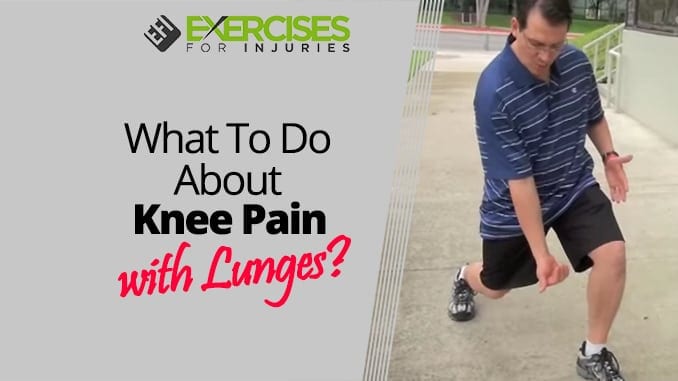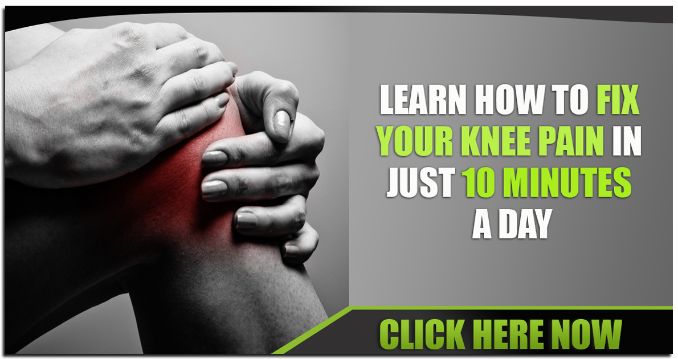
Lunges are one of the most challenging lower body exercises you can do. And for a good reason: They’re outstanding for firming and toning your thighs and glutes, as well as strengthening your knees and ankles. However, lunges are also one of the riskiest exercises out there. If you don’t perform them properly or don’t take care to avoid knee pain when doing lunges, they can do more damage than good. We see many people struggling with this exercise because it places a lot of pressure on the knees. This is especially true if you have weak joints or neglected training quadriceps, hamstrings, and gluteus muscles all along.
What can you do to avoid knee pain when doing lunges?
When it comes to avoiding knee pain during lunges, the first step is understanding the mechanics of the knee joint. Essentially, the knee is the joint where the tibia (shinbone) and femur (thighbone) meet. These two bones are cushioned by articular cartilage and synovial fluid to reduce friction. The kneecap (also called the patella) also protects the knee joint and helps with movement. When you do lunges, your knees are exposed to increased pressure and stress. To avoid knee pain, you need to understand how to properly and safely perform the lunge movement.
Today, we will discuss how to deal with lunging injuries.
I met Sara Dean at a conference and spoke to her. She is a personal trainer and boot camp instructor who specializes in injury and exercise. Many of her clients struggle with lunging knee pain.
I interviewed Sara about how to handle knee pain problems.
Here is how she answered her clients’ questions on lunging.
Let me go through what I talked about in the interview.
#1 – Try a Back Lunge
To reduce pain during a front lunge, make a back lunge.
The more force applied to the back leg will result in a decreased amount of pain.
#2 – Look at Technique
Make sure you lunge correctly by beginning.
Make sure the knee of the front leg doesn’t pass the toes and that the weight is mainly on the heel.
#3 – Stride Length
Taking large steps rather than normal-sized steps will decrease the risk of the knee going past the toes.
Many people will rush forward suddenly.
#4 – Focus on Down
When performing a lunge, people often focus on moving their body and knee forward, which causes the knee of the front leg to pass the toes.
Instead, the focus should be on lowering your body, which will reduce the likelihood that your knee passes your toes.
#5 – Look at Flexibility
Look at the flexibility in the quads and hip flexors to see if they are tight and putting more pressure on the patella (knee cap), which may result in greater stress on the knee.
When it comes to fitness, knee pain should never be ignored. If you regularly experience knee pain, you should talk to your doctor. They may be able to help you address the issue. Knee pain can be a sign of a serious medical condition. That’s why it’s important to get it checked out as soon as possible. Overall, knee pain is a sign that your body needs to adapt and get stronger. This may mean that you need to change up your leg exercise or change your lunge variation to avoid knee pain. Whatever you do, don’t let knee pain stop you from exercising.
A huge thank you to Sara Dean, a Seattle Personal Trainer who helps new moms lose their baby weight.
In the video, we talked about Knee Injury Solution, a program I put together to help recover from knee pain and injuries.
I just finished writing this, and now I’m thinking about lateral knee discomfort. I believe it would make an excellent blog post. I’ll get it posted ASAP.
If you are looking for more articles related to knee pain, here are some that may help:
- Squats and knee pain
- To Leg Press or Squat if You have an ACL Injury?
- The Best Exercise For Patellofemoral Pain Syndrome
Here are a few other knee pain videos that may interest you as well:
- How Your Core Could Be Leading To Your Knee Pain
- How the Things You Are Eating Can Make Your Knee Pain Worse
That is it. Have a great day!
Rick Kaselj, MS


